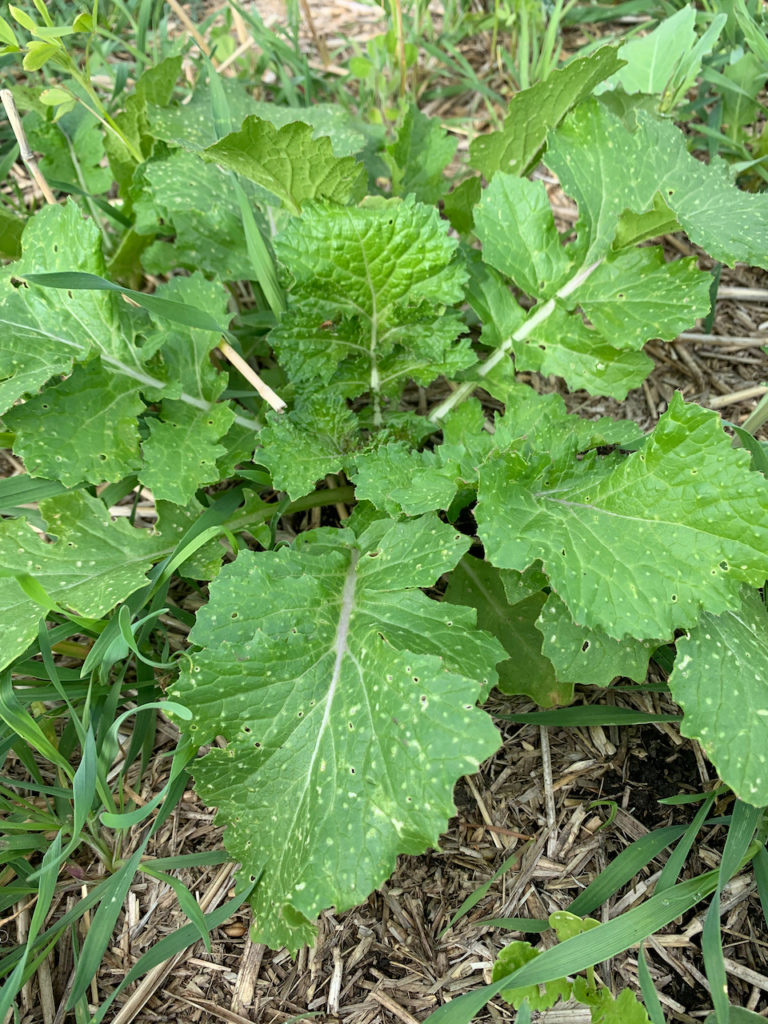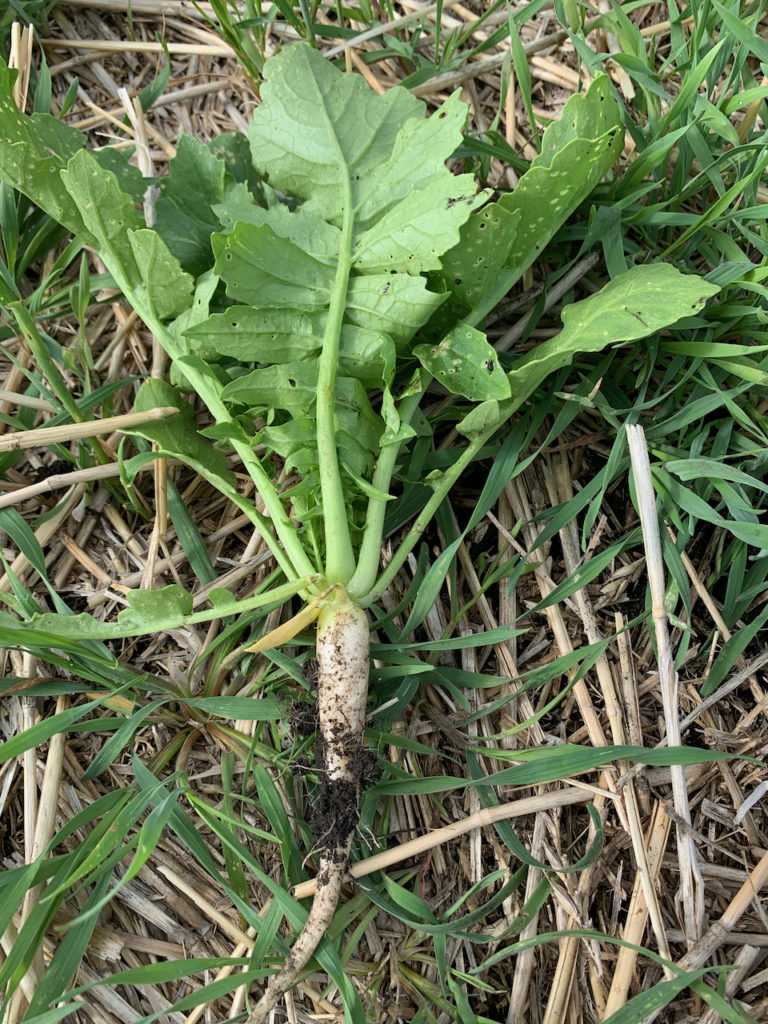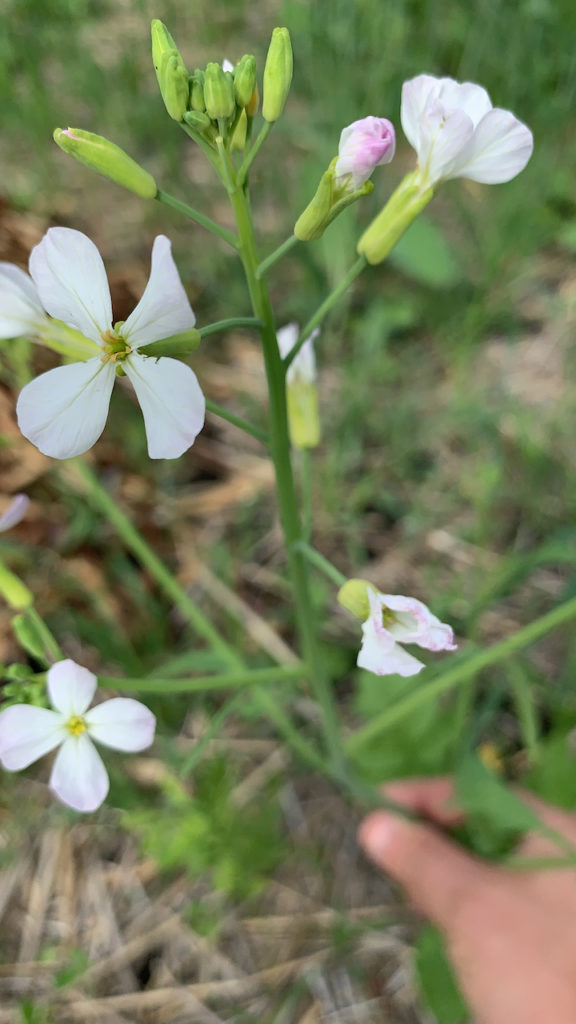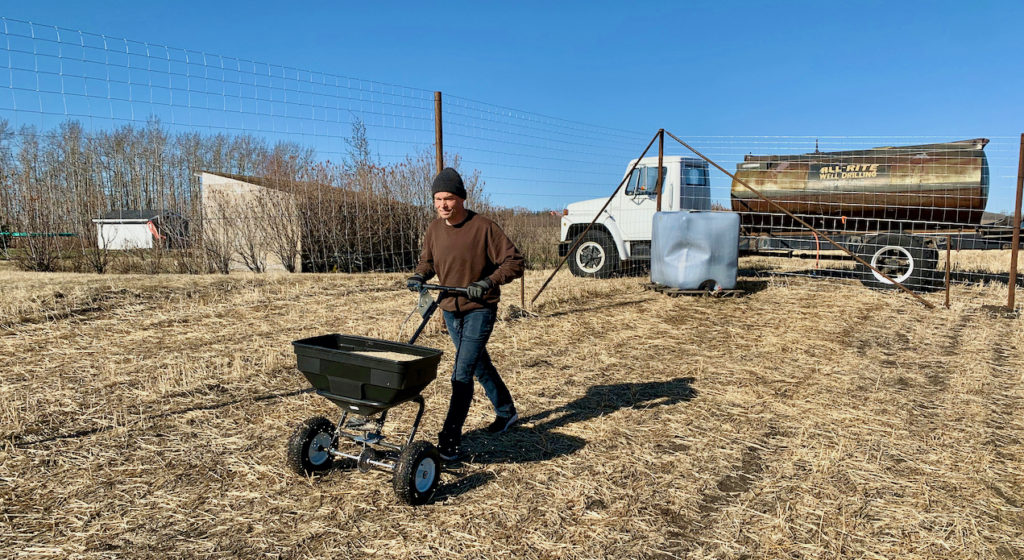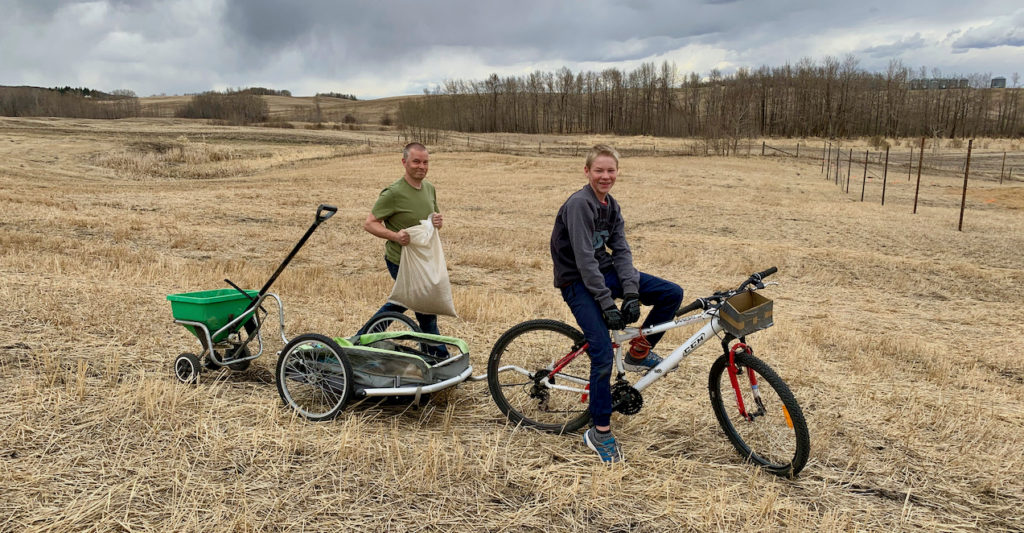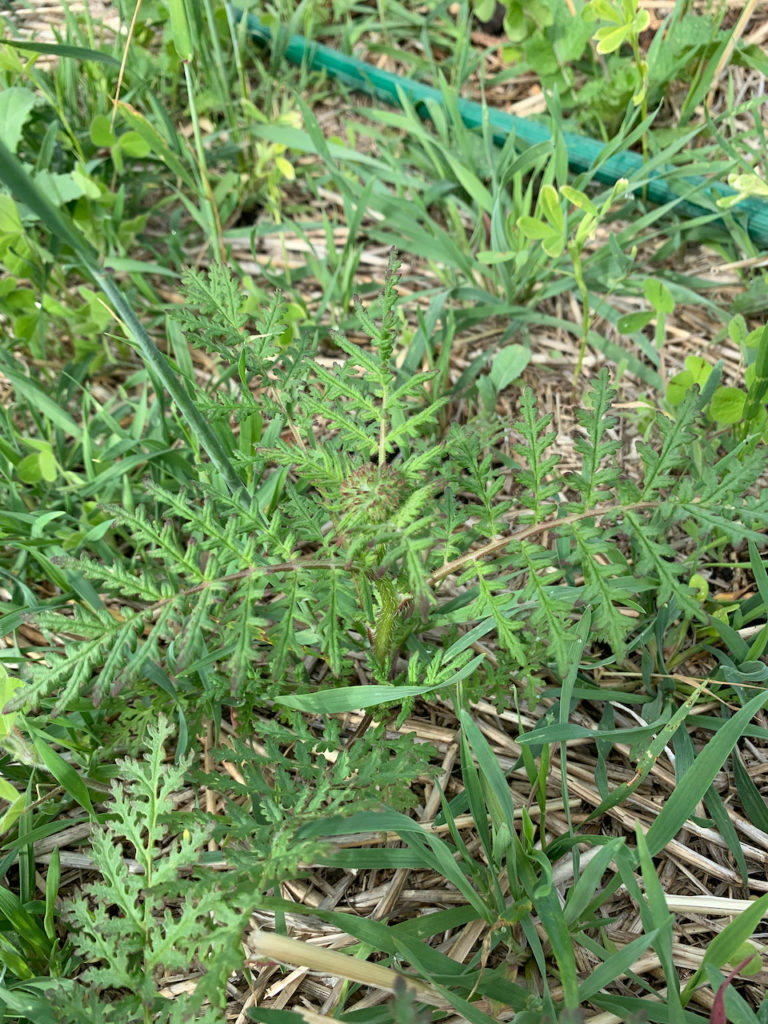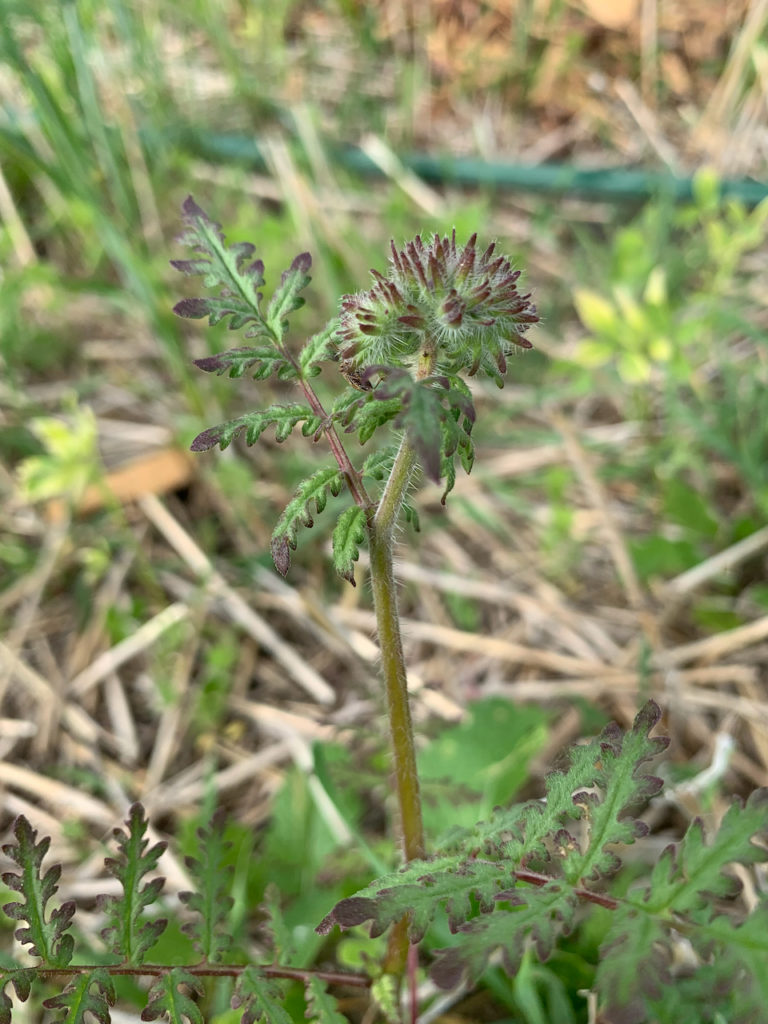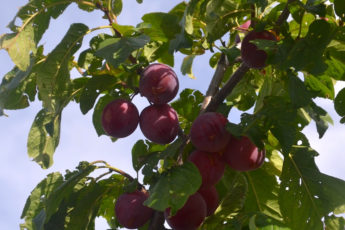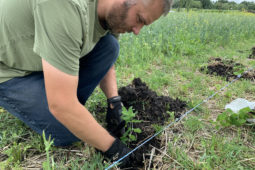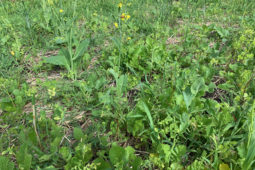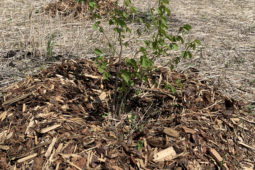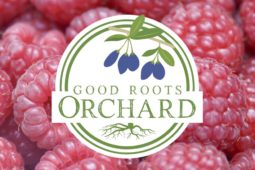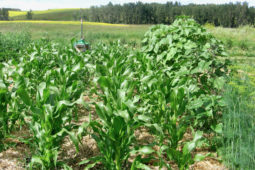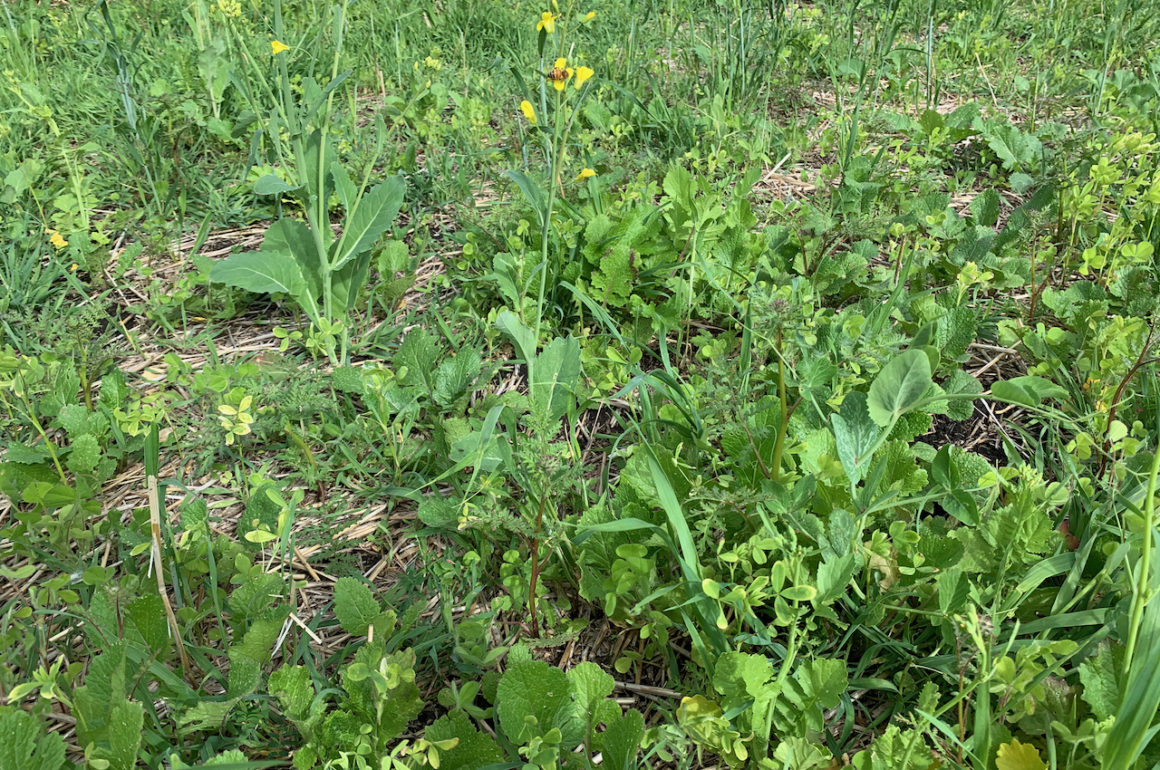
It might seem a bit strange to say this, but one of the things that has brought me the greatest amount of joy thus far in my orchard has been my cover crops! (Mind you, once my fruit trees are old enough to produce fruit, I imagine they’ll take first place in that race!) But for now, it’s quite a delight to look out over the orchard and see the beautiful variety of plants that are growing and thriving in every square foot – knowing that not only are they beautiful, but they are also saving me a significant amount of work and expense!
“How so?” you ask? Well, let me take you on a photo stroll through the orchard and I’ll explain what I mean.
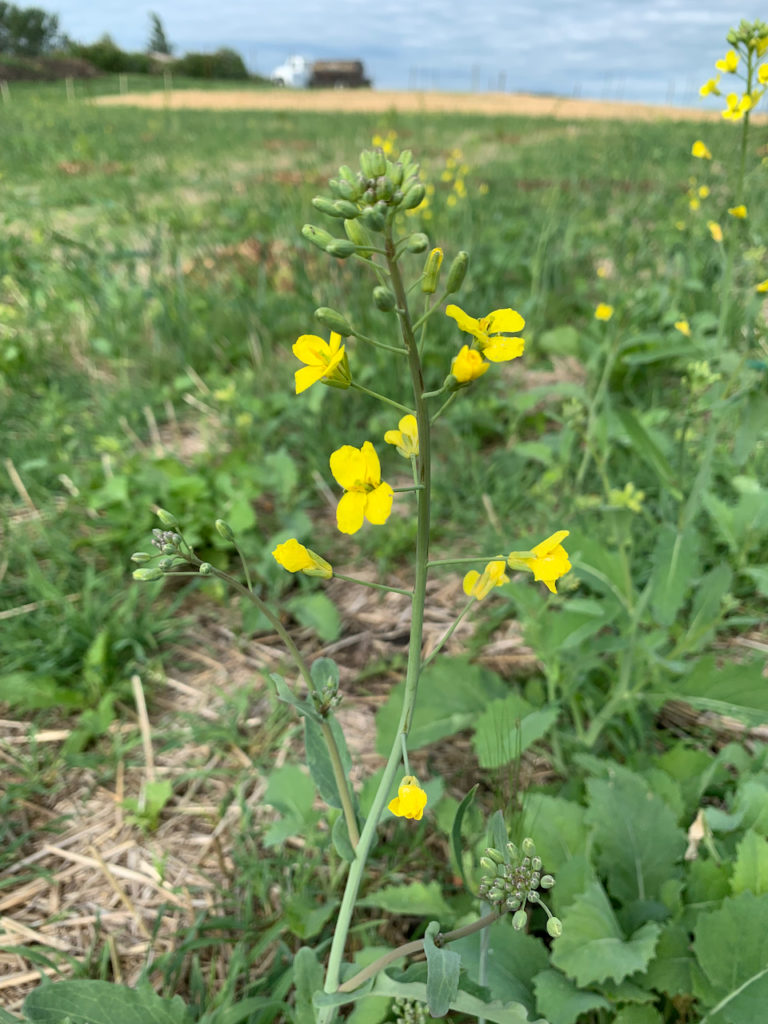
One of the most noticable plants in the orchard is the bright yellow canola. This wasn’t actually part of my cover crop seed mix, (although some do include canola) but it just came up as a volunteer from the canola crop that was planted two years ago. None-the-less, it’s something I would plant on purpose in the future as canola produces some of the most biomass of anything I might plant. It will add a great deal of nitrogen-rich material to my soil when it dies this fall.
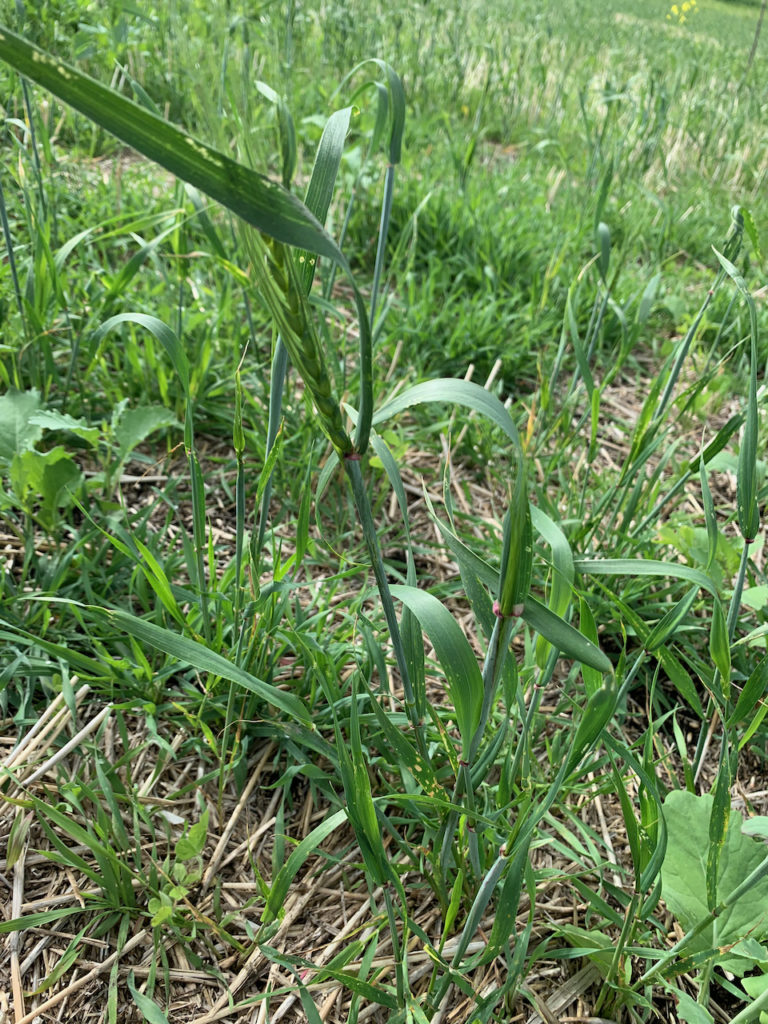
The other crop that I didn’t seed, but is growing anyway, is the barley/wheat that is volunteering from last year’s crop. The plot that I’m using for my orchard was rented out to a local farmer last year who planted this, and there is an abundance of it growing this year – which is great! This will give me a significant amount of straw that will provide the mulch for next years crop. Straw doesn’t break down quite as fast as other vegetation, so it’ll be great for suppressing weeds and holding in moisture.
Of the plants that I’ve purposely planted, one of the most visible right now is the radishes. These are one of the most useful plants growing in my orchard right now. First of all, they are big leafy plants that cover the soil really well – holding in moisture and blocking out weeds. Secondly, they have large, deep roots that drill down into the soil, breaking up compaction and leaving large voids as they decompose and feed the worms. This loosens the soil and provides gaps to hold water later. (The photo above shows the root in late June – imagine what it will be like at the end of summer!) Third, they are actually edible radishes. Put them in salads, eat them raw – how ever you like them! And finally, they have really pretty white flowers!
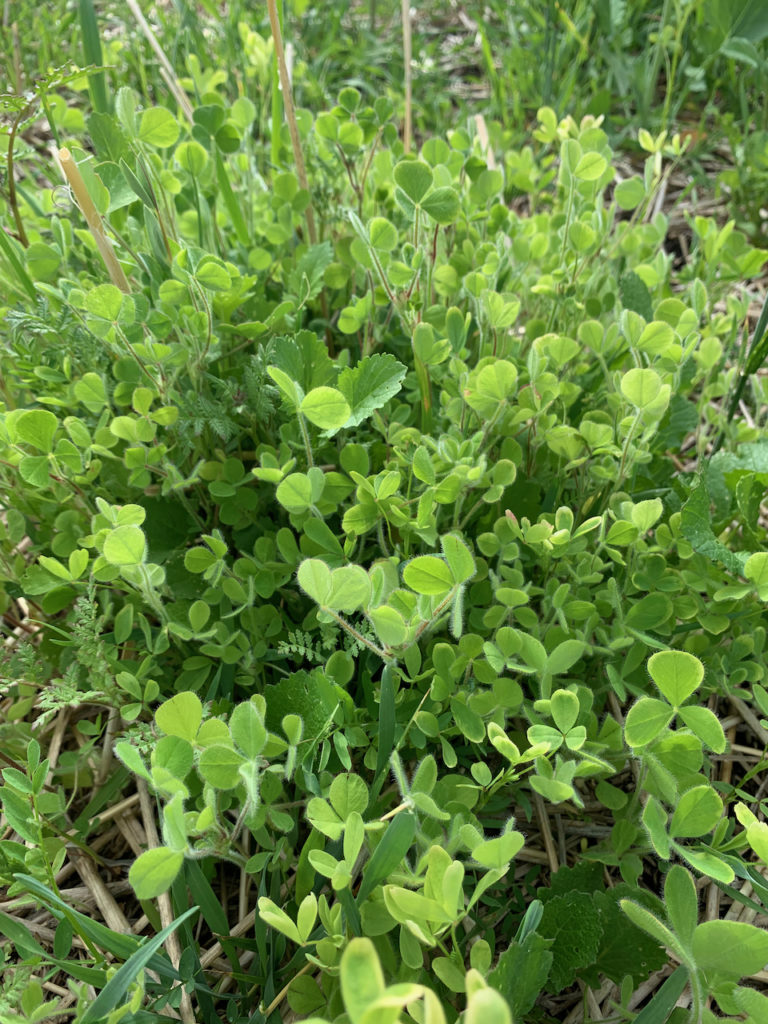
Crimson clover is another important plant in my cover crop. Clovers are great nitrogen fixers and make a great ground cover. I’m considering permanently planted the rows in between my trees primarily to clover for those reasons.
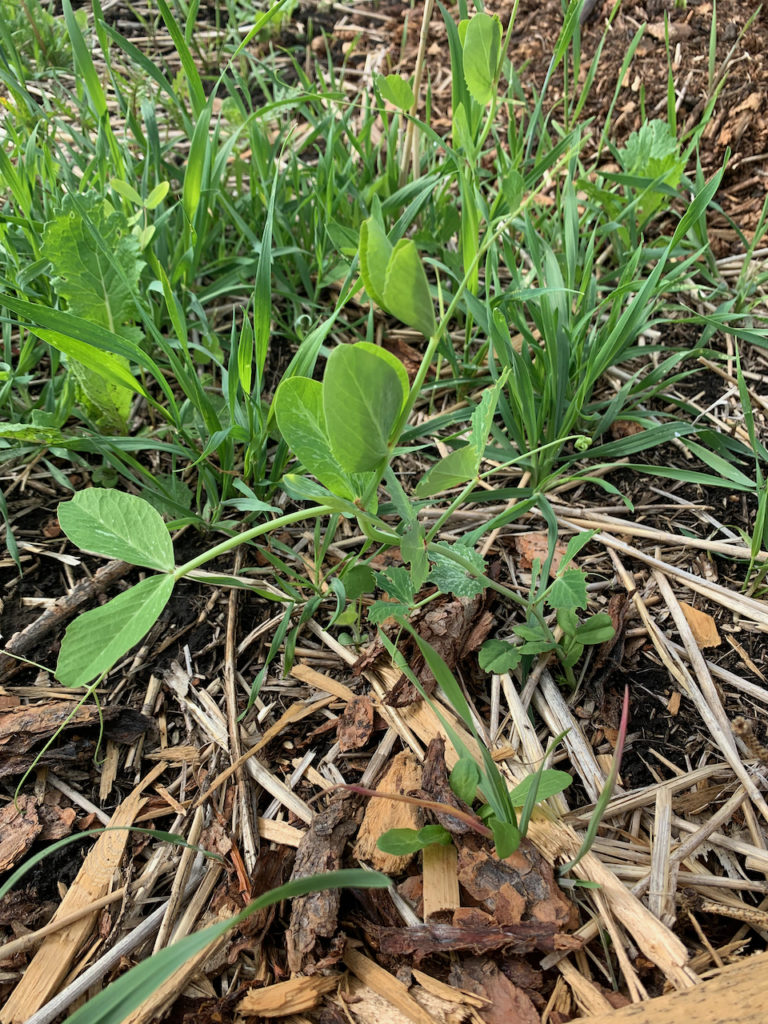
Field peas are another nitrogen fixer in my cover crop mix. They might not be as good as clover in the ground-cover department, but they’ll be a great source of nitrogen.
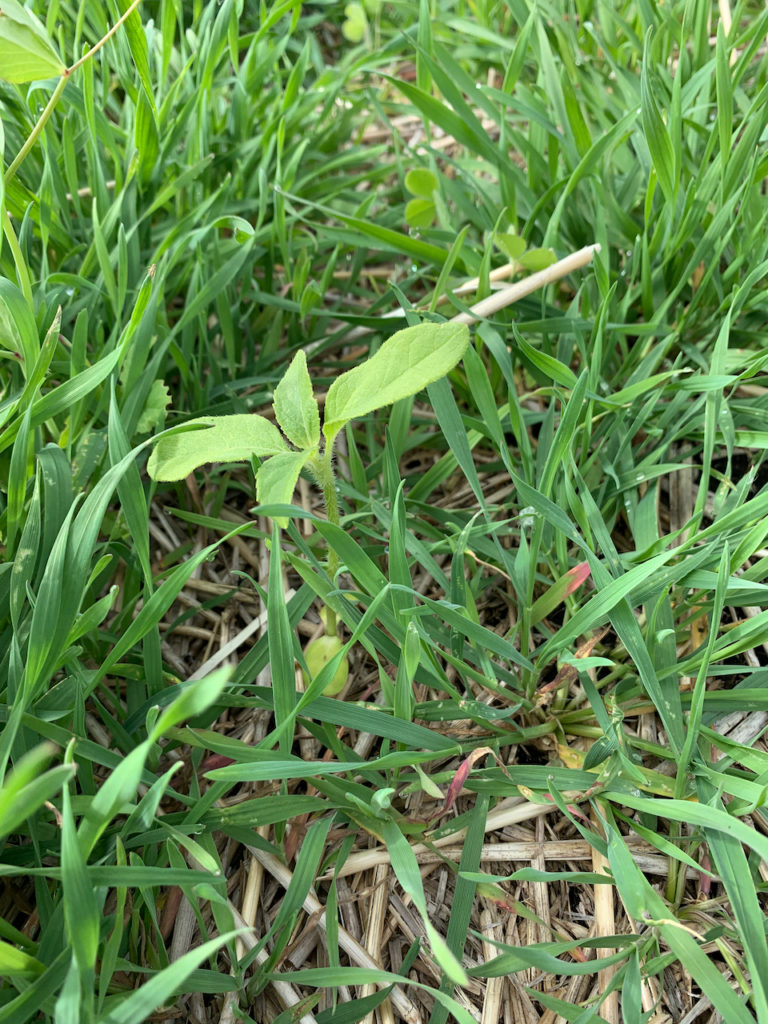
This photo has two crops. One is sunflowers and the other is rye. Sunflowers have good thick stalks that take quite a while to decompose. This is like having a layer of armour on your soil – protecting it from erosion, moisture loss, and weeds!
Rye is my main cover crop. I have planted more rye than any other plant in my orchard. Rye does all the stuff I’ve already talked about, but one of the biggest draws for me is that it is relatively inexpensive! I purchased my cover crop seed mix this spring (called “Nitro Seasonal Cocktail”) that consisted of 14 different varieties of plants all mixed together. This cost me about $120. I bought roughly 10x that amount of rye seed for roughly the same price. So you can imagine which one I seeded heavier!
And just on that note, I should mention quickly how I seeded everything. I broadcast my seed with a small push-broadcaster that throws the seed out in a 10ft radius. (When I got tired of pushing, I connected the spreader to my sons bike and had him do a few rows!) After seeding, I pulled a small set of harrows over it to cover the seed with soil best I could. The germination rate this way wasn’t nearly what a conventional seeder would do, but I tried to account for that in my seeding rate.
The last plant that I’ll mention is a new one to me this year. It’s called Phacelia and it’s actually quite a cool looking plant.
It will have some lovely purple flowers later on this summer that the bees will enjoy. If you need to attract pollinators, this is an excellent choice!
All of these plants put together will save me a ton of work. Less watering as they shield and shade the soil. Less fertilizing as they provide nitrogen and other nutrients to next year’s crops. Less weeding as they provide a living mulch for the plants they surround. And less tilling as they break up the soil and feed the worms and other microorganisms in the ground. It’s a win/win/win/win!
Thoughts? Comments? Questions? I’d love to hear from you. Leave a comment below!


